Apple on Tuesday was granted a patent for a weightlifting tracking system that uses a standalone sensor to transmit metrics to a remote display, which in some cases include a wristwatch.
The U.S. Patent and Trademark Office granted Apple U.S. Patent No. 8,749,380 for a "Shoe wear-out sensor, body-bar sensing system, unitless activity assessment and associated methods" is actually a continuation of multiple patents describing a fitness-related patent ecosystem. Apple has whittled the property down substantially since it was first filed for in 2006.
In the intervening years, Apple culled numerous claim references to shoe wear-out sensors and unitless measurements, but kept the body-bar sensing system and corresponding watch readout. AppleInsider last reported on the property in early 2013 when it was published as a mostly intact application by the USPTO.
As granted, the patent covers a system in which a sensor-laden device attaches itself to a weightlifting bar and counts and displays repetitions. Unique to Apple's invention is the inclusion of a watch for remote readings, possibly hinting at a future or intended use case scenario for the company's much-rumored iWatch.
According to the document, the bar device can incorporate Hall Sensors, accelerometers, processors and its own onboard display. Alternatively, number crunching and display duties can be offloaded wirelessly to a user's watch. Sensor hardware clips on to the appropriate fitness equipment, whether it be a bar, dumbbell or machine apparatus, and takes movement readings to count proper repetitions.
In some instances, the sensor package is a standalone unit that can be transported from one piece of equipment to the next, while other embodiments provide for a semi-permanent solution like a bar clamp. Most gyms provide spring-loaded or standard clamps to keep weights from sliding off the bar during rigorous exercise.
From there, a user can read their workout metrics from the sensor device or a wrist-worn watch. Metrics like time intervals between movements are compared against predetermined data to count reps that are then fed to the watch display for easy reading. A user's reps can be further collected and analyzed by the watch device to track progress over multiple sessions.
Apple has yet to announce an iWatch, though many expect the tech giant to introduce a wearable device of some kind later this year. With the new HealthKit framework and corresponding Health app for iOS 8, which can collect raw data from external devices, Apple is making a push into fitness and health-tracking devices.
As for its own hardware, the latest rumors point to a form-fitting wristwatch device with curved OLED screen.
Apple's weightlifting bar sensor with watch readout patent — as granted — was first filed for in 2012 and credits Curtis A. Vock and Perry Youngs as its inventors.
 Mikey Campbell
Mikey Campbell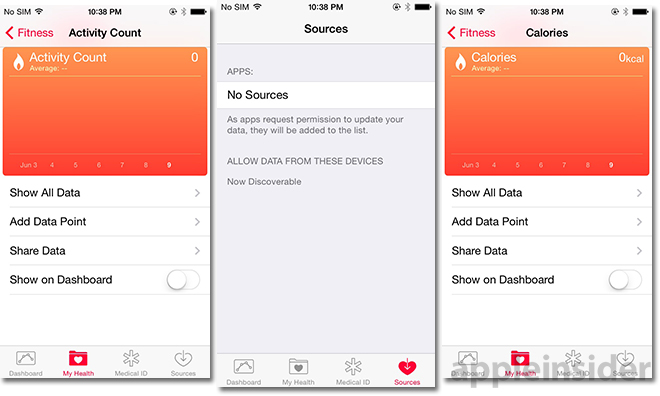

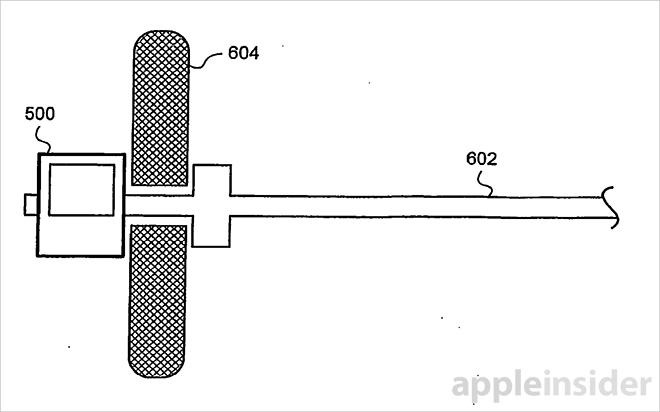
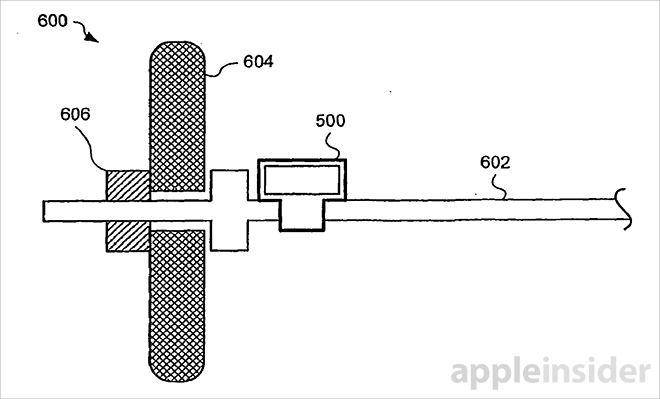

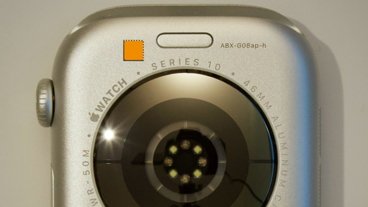


-xl-m.jpg)


-m.jpg)





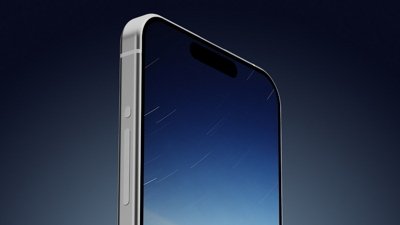
 William Gallagher
William Gallagher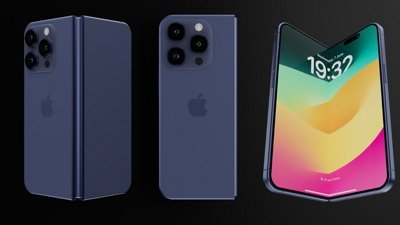
 Amber Neely
Amber Neely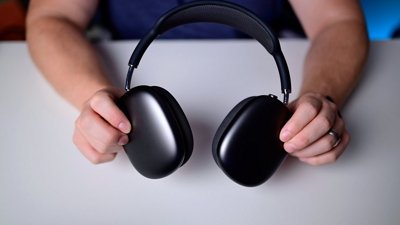
 Andrew Orr
Andrew Orr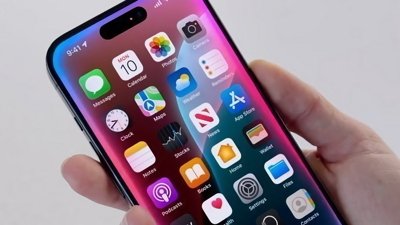



 Christine McKee
Christine McKee
 Chip Loder
Chip Loder








6 Comments
This sounds very Ivan Drago.
seems like it would be a complicated experience... move the device to the next apparatus, enter the weight, and then the device gives you range of motion (which is the same as the iWatch if moving by your hand... or your feet if you're working leg presses where the torso is static) to measure ROM/Acceleration, which would eventually give you the energy expended (calories). and the sensor doesn't need the Iwatch for anything... it appears to be just displaying the results. Unless the Iwatch is just a collector to marry up with the mother iDevice later for number crunching. For the most part, in the weightroom, I need something that tells me my next exercise something that tells me the time alloted (30 seconds for the set, 45 seconds rest) something that records the effort (number of reps, time to completion)**** rinse, repeat. Determining ROM, acceleration, energy expended and or total poundage is almost so unimportant as to be a waste of design for most ardent iron heads. Given that iPhones are typically banned in most workout areas (cameras, people talking on phones, people sitting on apparatus while texting) having a capture device on your person while your phone is locked in your locker, and it does the above would be a perfect personal training tool. Anything else is just bookkeeping that most do now with paper and pencil.
theothergeoff: You could just add this device to all you weightlifting bars, or maybe it's part of the bar. I'm a little surprised that this stuff is patentable, as it's a pretty straightforward and obvious development. Many companies have been working on measuring every type of imaginable exercise. Even seemingly obscure stuff like special discs for Ultimate and golf. Of course, the USPTO is as Google fearing as many around here, so it's not surprising that they don't turn up prior art in whatever searches they're doing. I remember reading about the Australian Cycling track team using a special system to track speed of a bar in the gym so that power (work rate) could be calculated and tuned to specialize for certain events like the first few pedal strokes of a kilo. This was before Bejing. Granted, it wasn't wireless at the time, but making a wired system wireless seems so obvious as to be something you shouldn't be able to patent.
Or you could just count your reps to get a general sense of whether or not you need to add weight. Then use the mirror to guide your progress. I'm all for tech, but we're getting to the point where we are demanding less and less from our own gray matter to do very simple things. Working out gives its own feedback. It's not a bad thing to also work out your brain. Memorizing weights/reps is fairly unchallenging.
[quote name="TheOtherGeoff" url="/t/180539/apple-patent-hints-at-iwatch-enabled-weightlifting-tracker#post_2548404"] Given that iPhones are typically banned in most workout areas (cameras, people talking on phones, people sitting on apparatus while texting) having a capture device on your person while your phone is locked in your locker, and it does the above would be a perfect personal training tool. Anything else is just bookkeeping that most do now with paper and pencil.[/quote] iPhones are NOT typically banned in most workout areas. Go to any of the national franchises, iPhones are all over the place. This would make up "most workout areas". Back to the topic. This is brilliant. Imagine having RFID labels on every dumbbell and plate. The smart bar clamp registers the signals and adds the weight accordingly. After each set, the info, including reps and ROM is sent to your watch. Watch can then give you type of exercise, reps, cal count, duration, progress, etc. On top of that, imagine the watch is hooked into your Bluetooth earbuds. It'll keep count for you over your music. Also, say you're on your last rep and losing momentum, the watch sees you need a boost and then starts pumpin you up...either shouting at you or turning up the music. I guess sitting down and taking up a bench while you use paper and pencil is the cool thing to do though.